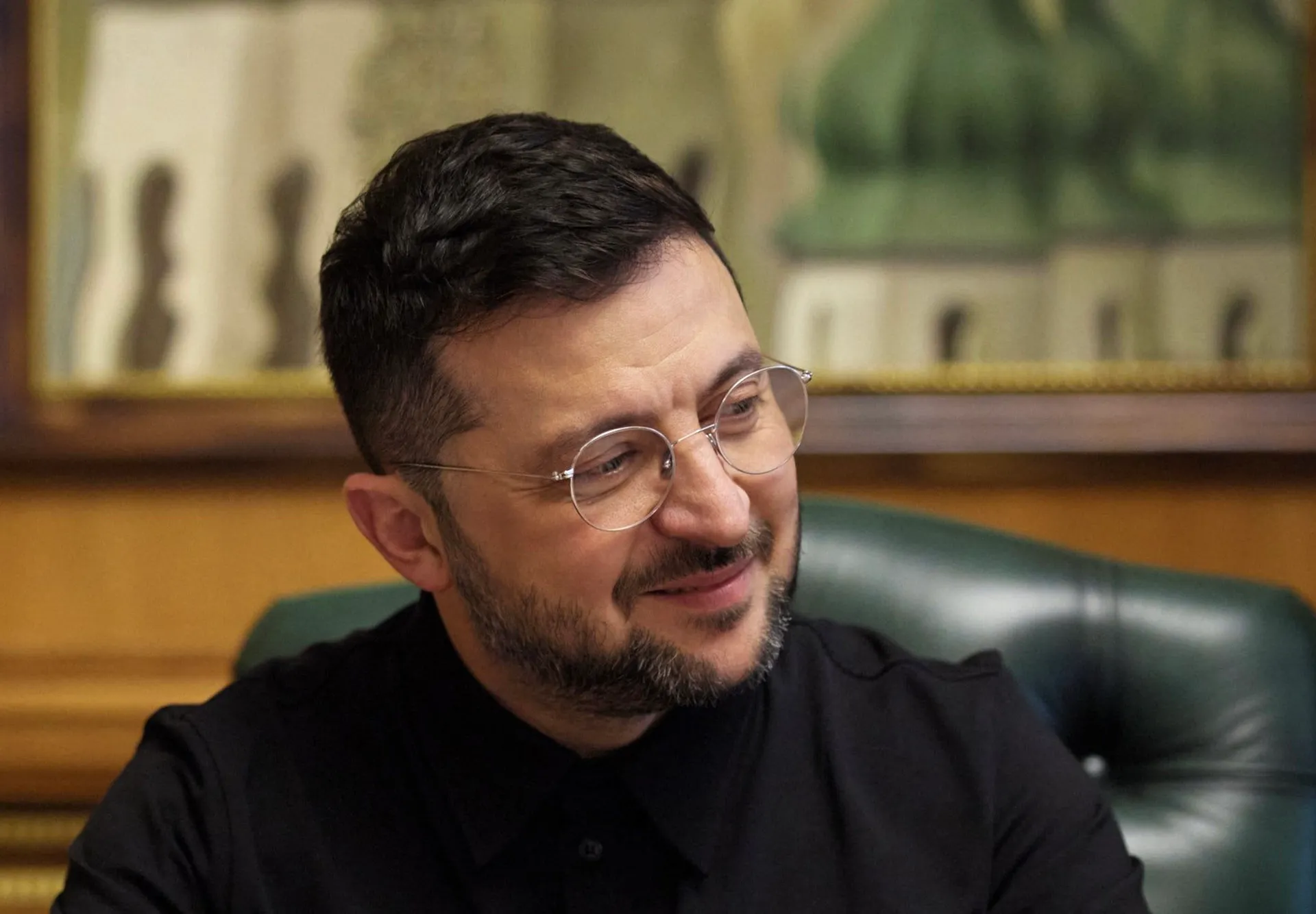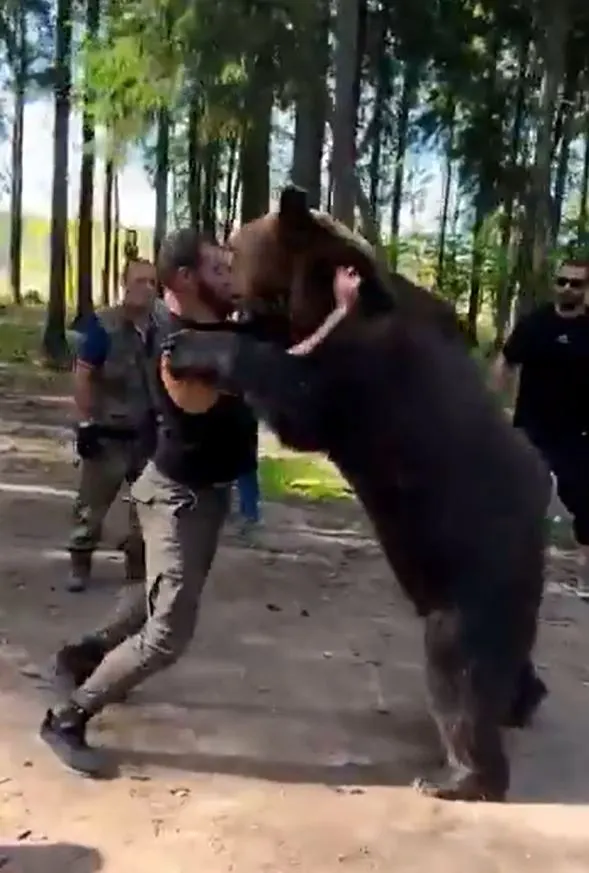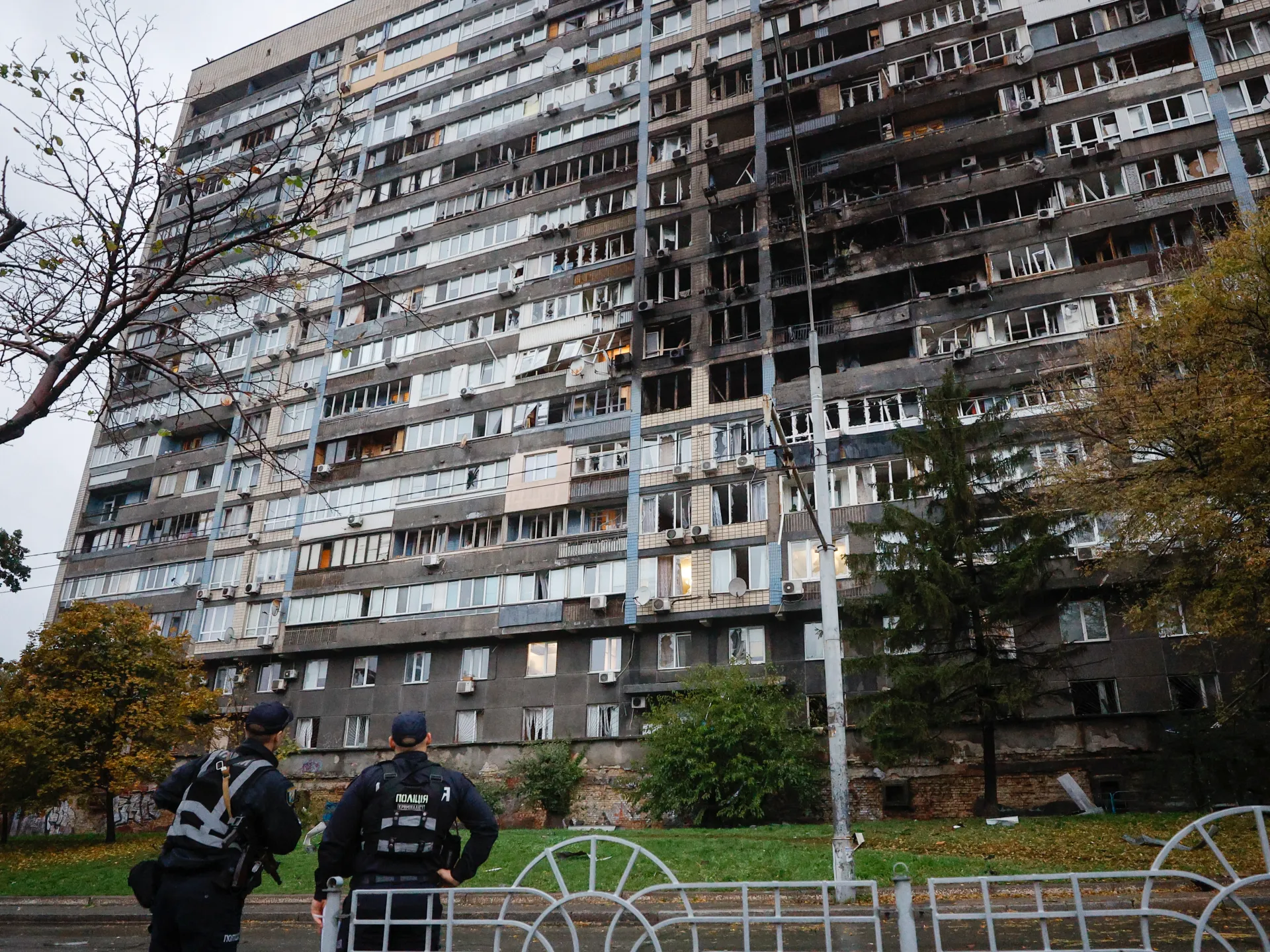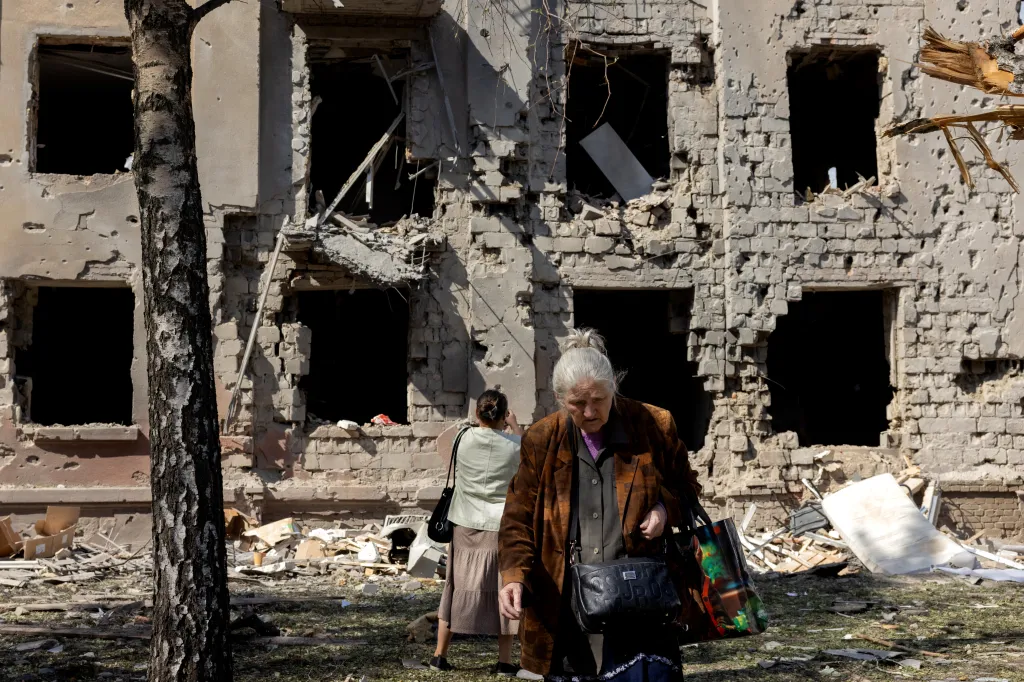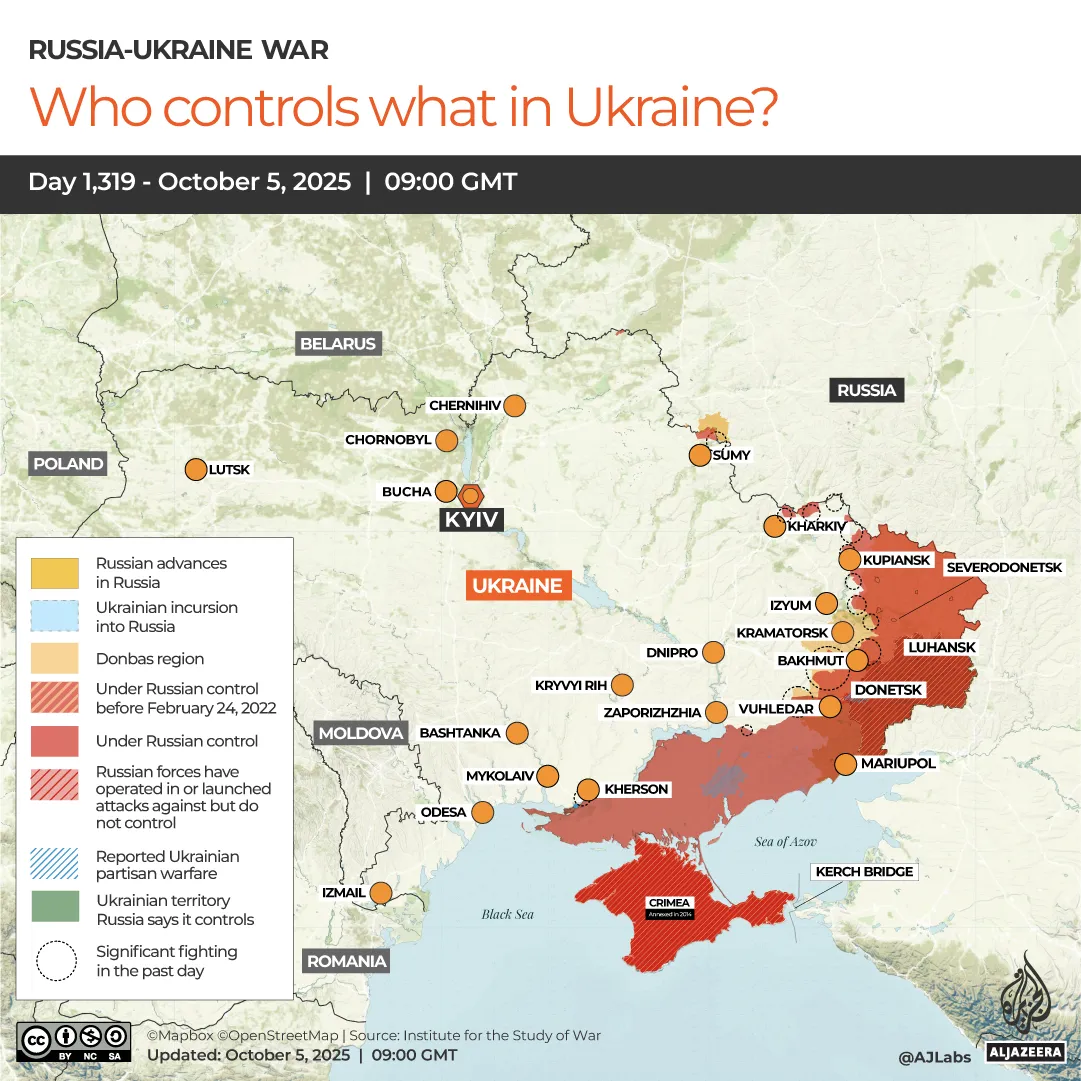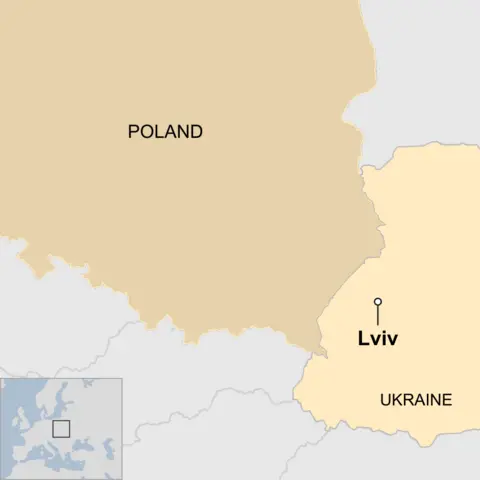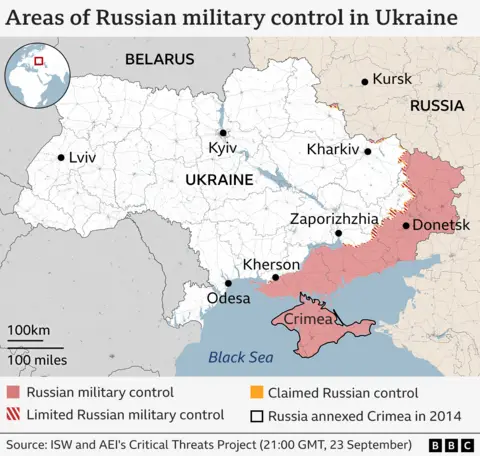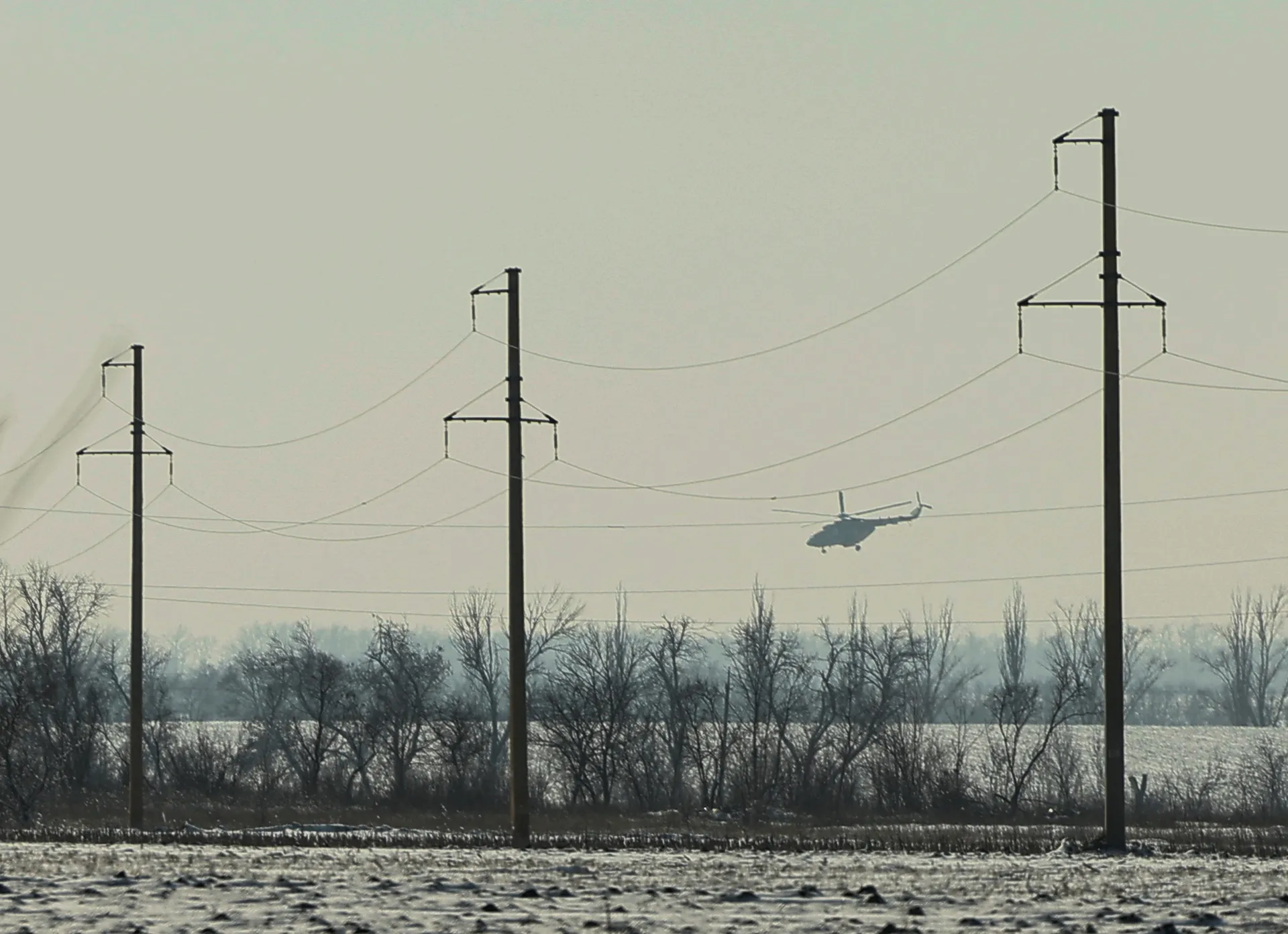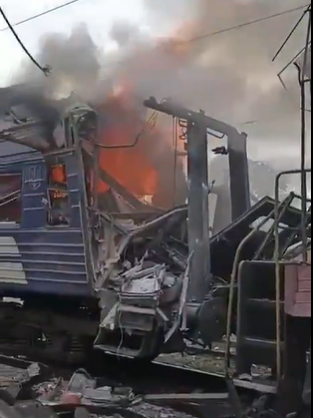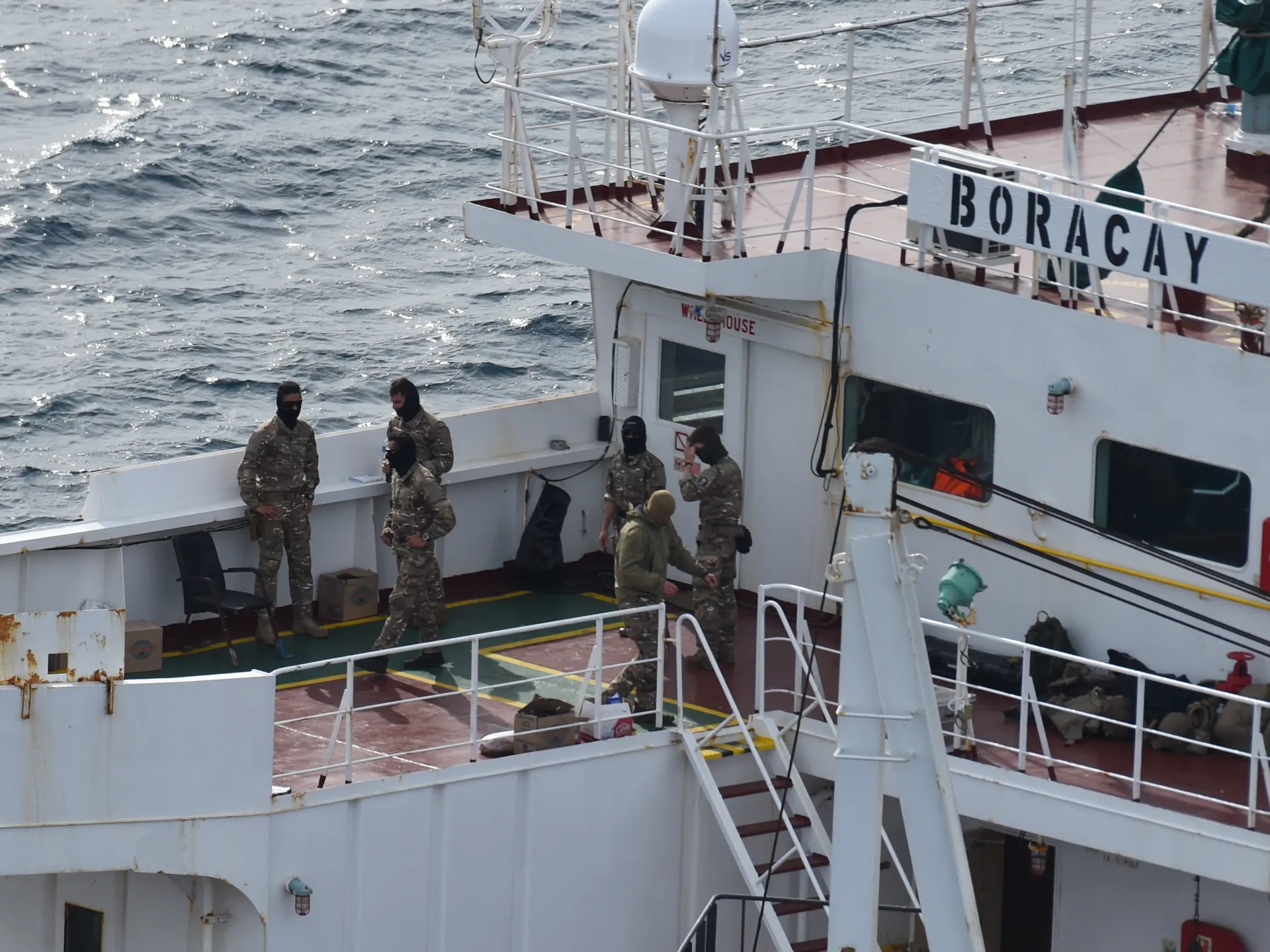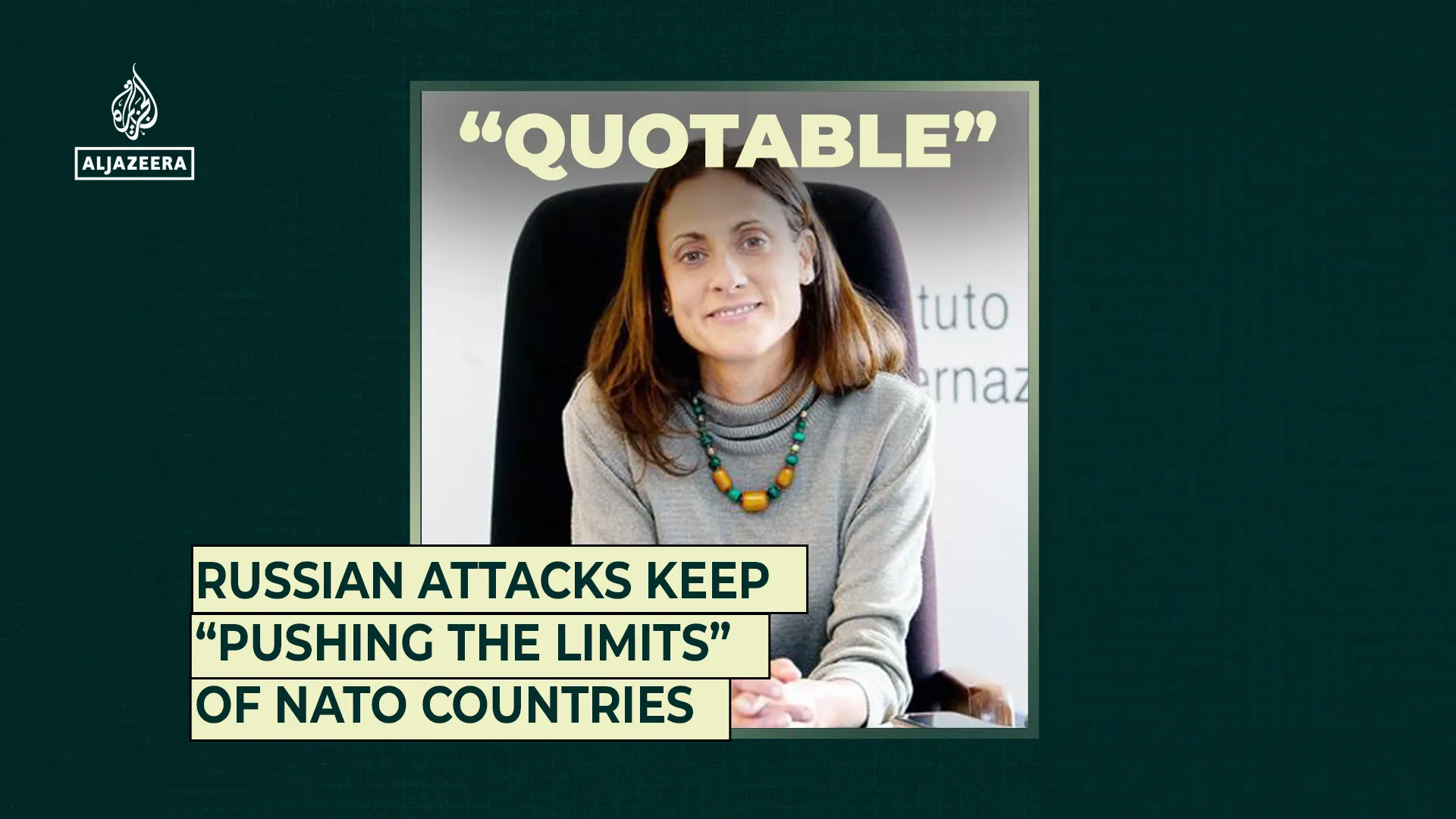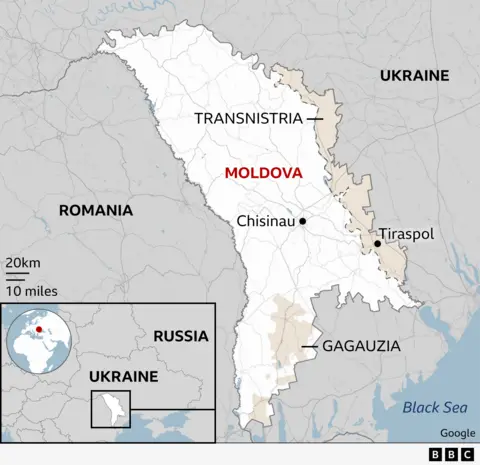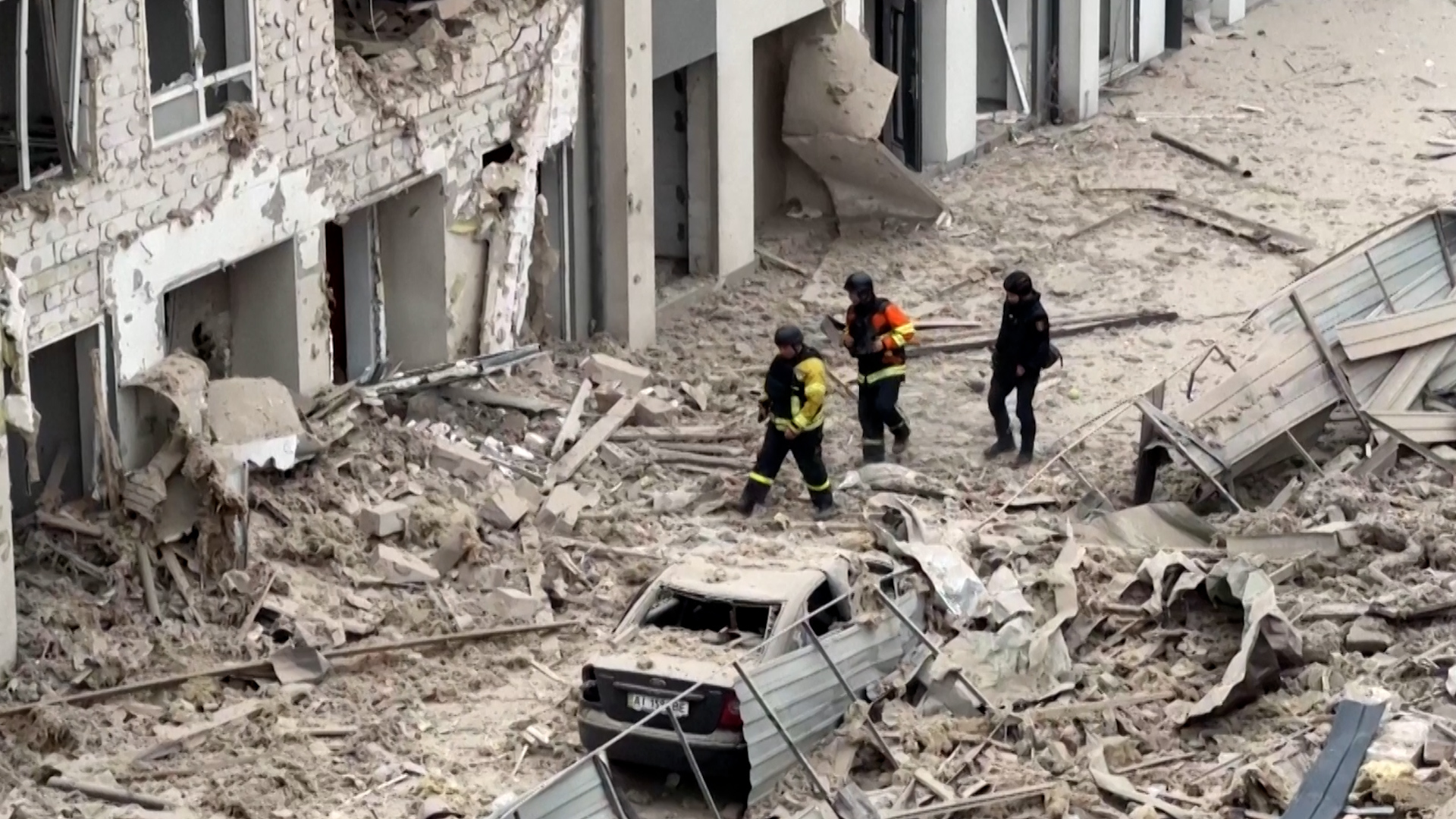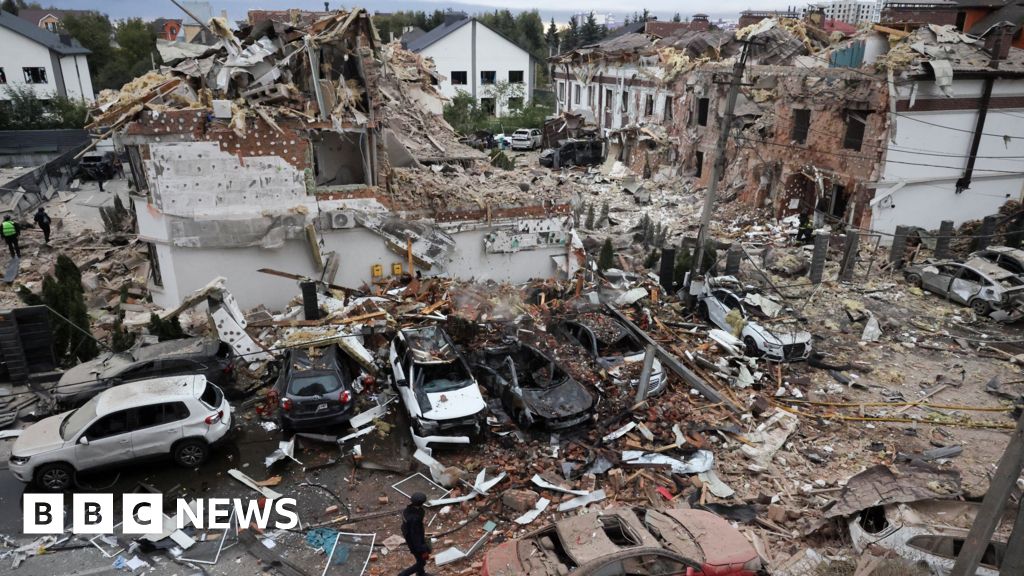European Union leaders are considering a “reparations plan” that would use frozen Russian state assets to provide Ukraine with a $164bn loan to help fund its reconstruction after the war with Russia ends.
Leaders expressed a mixture of support and caution for the plan on Wednesday as they met in the Danish capital, Copenhagen, days after drones were spotted in Denmark’s airspace, prompting airport closures. While the drones in Denmark were not formally identified as Russian, other European countries, including Poland, Romania and Estonia, have accused Russia of drone incursions into their airspace in September.
Recommended Stories
list of 4 itemsend of list
“I strongly support the idea,” Danish Prime Minister Mette Frederiksen said. Swedish Prime Minister Ulf Kristersson also said he was “very much in favour” of the plan. Others said there could be legal complications, however.
Here is what we know about Europe’s “reparations plan”, how it may work and what the response from Russia is likely to be.
What is Europe’s ‘reparations plan’?
The reparations plan was first outlined by European Commission President Ursula von der Leyen in mid-September, and backing for it has grown as United States financial support for Ukraine wanes.
During his 2024 presidential campaign, US President Donald Trump promised voters he would pull the US back from providing high levels of financial and military aid to Ukraine.
Since the beginning of his term in January, Trump has made it clear the US will take a back seat in terms of providing financial support and security guarantees to Ukraine, indicating Europe should fill the gap instead.
Europe’s plan would use Russian assets frozen in European banks as collateral for a 140-billion-euro ($164.4bn) loan to Ukraine. Repayments for the loan would be recouped via war reparations from Russia, but the loan would also be guaranteed either in the EU’s next long-term budget or by individual EU member states.
“We need a more structural solution for military support,” von der Leyen said on Tuesday. “This is why I have put forward the idea of a reparations loan that is based on the immobilised Russian assets.”
How much in frozen Russian assets does Europe hold?
About $300bn in Russian Central Bank assets have been frozen by the US and European countries since Russia’s invasion of Ukraine in February 2022.
Most of this – $246.9bn – is held in Europe, of which $217.5bn – the vast majority in cash – is held by Euroclear, a Belgium-based capital markets company.
On June 30, Euroclear reported the Russian sanctioned assets on its balance sheet generated $3.2bn in interest during the first half of 2025, a drop from the $4bn in interest earned over the same period last year.
What are the challenges to this plan?
Under international law, a sovereign country’s assets cannot simply be confiscated. Hence, loaning this money to Ukraine would be an infringement of Moscow’s sovereign claim over its central bank assets.
Since most of the assets are held in Belgium, the country has asked for the plan to be fleshed out in case it is required to return the assets to Russia.
“I explained to my colleagues yesterday that I want their signature saying, ‘If we take Putin’s money, we use it, we’re all going to be responsible if it goes wrong,’” Belgian Prime Minister Bart De Wever told reporters in Copenhagen on Thursday.
On Wednesday, von der Leyen said: “It’s absolutely clear that Belgium cannot be the one who is the only member state that is carrying the risk. The risk has to be put on broader shoulders.”
Are any European leaders hesitant about this plan?
Yes. Besides De Wever, other European leaders have expressed hesitation or have asked their fellow leaders to work out more details of the plan before they agree to it.
Dutch Prime Minister Dick Schoof said the proposal should be considered very carefully, given the legal and financial risks that could arise.
Others also signalled caution. “I think that’s a difficult legal question,” Luxembourg Prime Minister Luc Frieden told reporters. “You can’t just take over assets that belong to another state so easily.”
Frieden added: “There are now other proposals on the table, but these also raise a whole host of questions. I would like to have answers to these questions first. Among other things, how would such a loan be repaid? What would happen if Russia did not repay these reparations in a peace treaty?”
Is the plan likely to go ahead?
Experts said European leaders would likely have to find a way to make the plan viable as the prospects of further US aid for Ukraine dry up.
“It is going to happen because with the US walking away, Europe is left with $100bn-plus annual funding needs for Ukraine,” Timothy Ash, an associate fellow in the Russia and Eurasia programme at Chatham House, told Al Jazeera.
Ash explained that the bigger challenge for Europe would be to not go ahead with the plan if it means leaving Ukraine underfunded generally and placing it at higher risk of losing the war with Russia. “Risks to Europe would then be catastrophic,” he said, including the prospect of tens of millions of Ukrainians migrating west into Europe.
If a Ukrainian loss in the war becomes more likely, European nations would be forced to ramp up defence spending to 5 percent of their gross domestic products (GDPs) much faster than expected.
In June, members of NATO pledged to increase their defence spending to 5 percent of their GDPs by 2035.
Such an acceleration “would mean higher budget deficits, higher borrowing costs, more debt, less growth and a weaker Europe and euro”, Ash said.
How has Russia responded?
Moscow has rebuked the EU plan, calling it a “theft” of Russian money.
“We are talking about plans for the illegal seizure of Russian property. In Russia, we call that simply theft,” Kremlin spokesman Dmitry Peskov told reporters on Wednesday.
Peskov said anyone involved in seizing Russian assets “will be prosecuted in one way or another. They will all be called to account.”
He added: “The boomerang will very seriously hit those who are the main depositories, countries that are interested in investment attractiveness.”
Ash said Russia could take legal action against European countries if the plan goes ahead. However, “it would have to lift its own sovereign immunity to be able to launch any such legal action. And a legal action by Russia would take years – decades to conclude.”
Russia is protected by sovereign immunity, which is a legal principle shielding foreign governments from being sued in courts outside their own country. If Russia wants to legally pursue this, it would need to waive this immunity, which, in turn, would mean Russia could also be sued or tried in a foreign country.
Ash added that another course of action Russia could take would be to seize Western assets under its jurisdiction, but this also does not come without challenges. “Russia has 10 times more assets in the West than vice versa,” Ash said. “It’s just more vulnerable through this channel.”
How much in Western assets does Russia hold?
Moscow said the value of all foreign assets it holds is comparable to the frozen Russian reserves held in the West. Citing data from January 2022, Russia’s state-run RIA news agency reported there were about $288bn of assets in Russia that could potentially be seized by Moscow.
However, Russian Central Bank records from 2022 show there were $289bn in “derivative and other foreign investments” in Russia. By the end of 2023, these foreign assets had dropped in value to $215bn.
Ash explained: “Those assets are all foreign assets – not just Western. [They include] Chinese, Indian, Middle East assets. And most of those assets are private – not state.”
